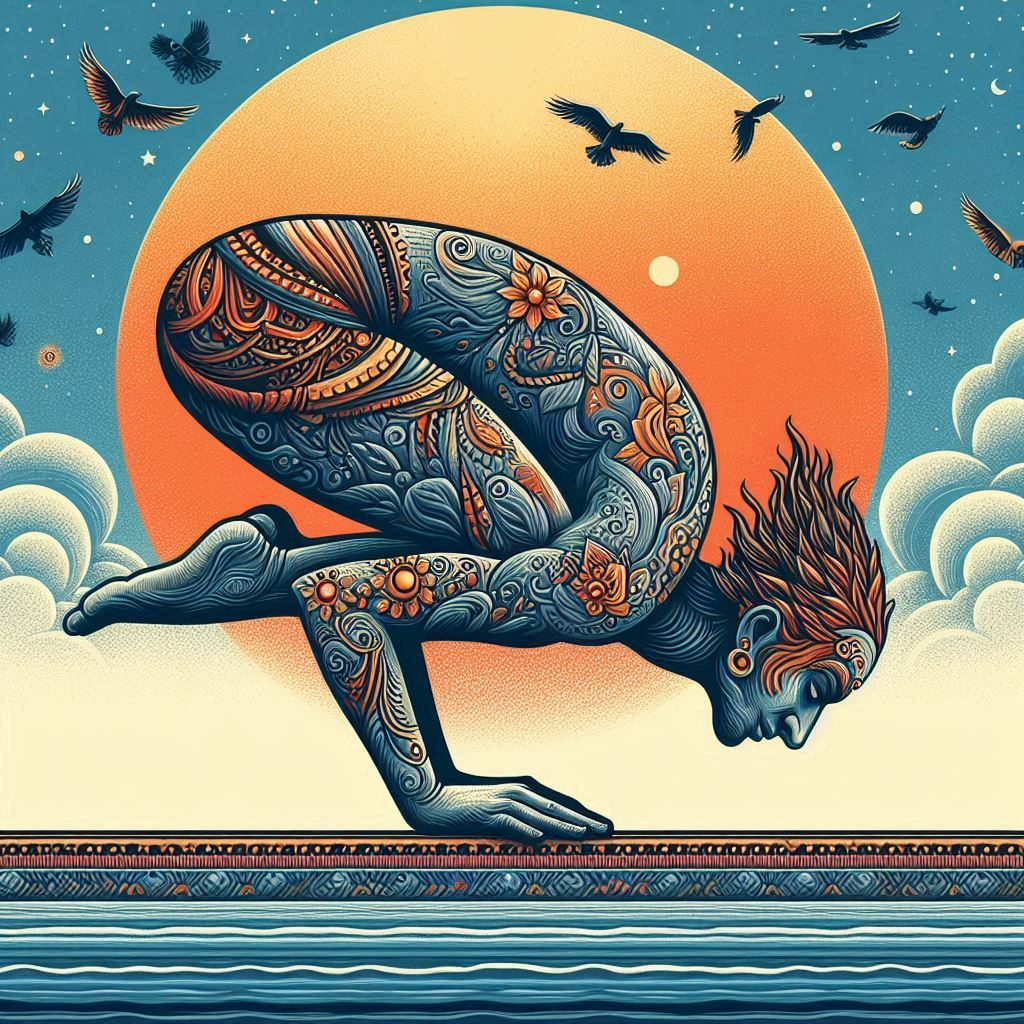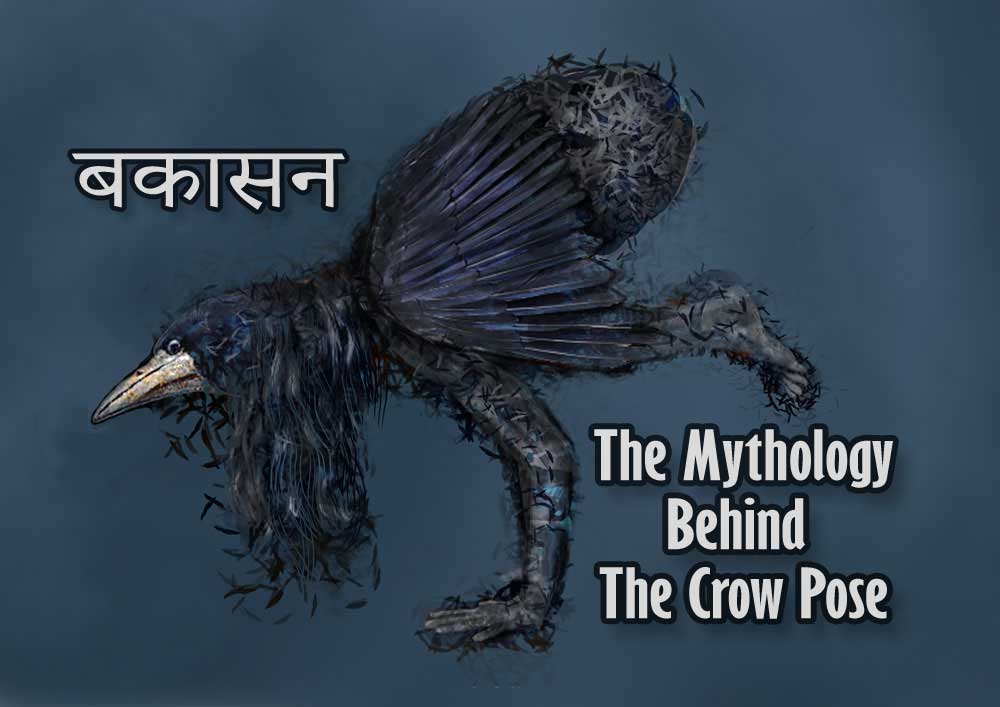Crow pose, also known as Bakasana in Sanskrit, is a popular yoga pose that involves balancing on the hands with the knees resting on the elbows. This pose is associated with several mythological roots and has a rich cultural history.
The exact age of the crow pose (Bakasana) is not known, as yoga poses have been passed down through oral tradition for thousands of years. However, it is believed that the pose was first described in the 17th century Hatha Yoga Pradipika, one of the most important texts on Hatha Yoga.
One popular story tells of how Lord Shani was cursed by his wife to be blind whenever he set his gaze upon her. To avoid this curse, Lord Shani decided to live in isolation in the forest. One day, a crow saw Lord Shani and decided to peck his eyes out. As a result, Lord Shani became blind and was unable to carry out his duties as the god of justice and discipline.
Feeling remorseful, the crow decided to offer himself as a servant to Lord Shani. He became Lord Shani’s messenger and would fly all over the world to deliver messages and ensure that justice was being served. In return, Lord Shani blessed the crow with the power of prophecy and the ability to see the future.

In Scandinavian mythology, the crow is closely associated with the god Odin (also known as Wodan), who is considered the god of wisdom, magic, and war. Odin is often depicted accompanied by two crows named Huginn (thought) and Muninn (memory), who would fly all over the world and bring back information to Odin.
According to Norse mythology, Odin would sit on his throne in Valhalla and send out his two crows every morning to observe the world and report back to him. The crows were believed to represent Odin’s wisdom and intelligence, as they would bring back valuable information that helped Odin make important decisions.

In addition to their role as messengers, crows were also seen as symbols of death and transformation in Norse mythology. It was believed that crows would gather at the site of a battle and feast on the fallen warriors, symbolizing the cycle of life, death, and rebirth.
The crow’s association with Odin in Scandinavian mythology highlights its importance as a symbol of wisdom, intelligence, and transformation. Like Lord Shani in Hindu mythology, Odin’s close relationship with the crow demonstrates the bird’s significance in mythology and its ability to represent important themes and concepts.
The association of both Lord Shani and Odin with prophecy and the ability to see into the future highlights the importance of wisdom and insight in these mythological traditions. The crow, as a symbol of intelligence and foresight, plays a significant role in these stories, emphasizing the value of these qualities in the pursuit of knowledge and understanding.
In the yogic tradition, the crow pose is said to activate the Manipura chakra, which is the third chakra located in the navel region. This chakra is associated with the element of fire, and the crow pose is believed to help stimulate the digestive system, increase metabolism and boost overall energy levels.

In addition to its mythological and spiritual significance, the crow pose is also seen as a symbol of strength, balance, and focus. This pose requires a great deal of physical and mental strength, as well as a strong sense of balance and concentration. Practicing this pose can help develop these qualities, both on and off the yoga mat. By practicing the crow pose with loyalty and devotion, Like Lord Shani’s crow, we can tap into its mythological and spiritual significance and develop our physical and mental strength, balance, and focus.
“The crow is a symbol of loyalty and devotion, and Lord Shani’s messenger crow embodies these qualities. The crow’s loyalty to Lord Shani is a reminder of the importance of devotion and commitment in our own lives.” Shani Dev and His Messenger Crow” by Ashwini Kumar Aggarwal:

